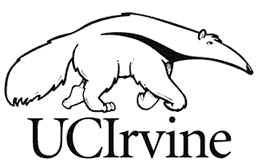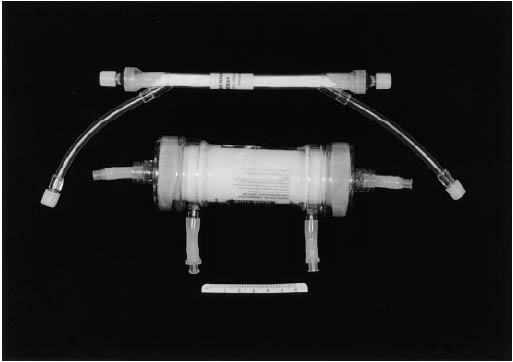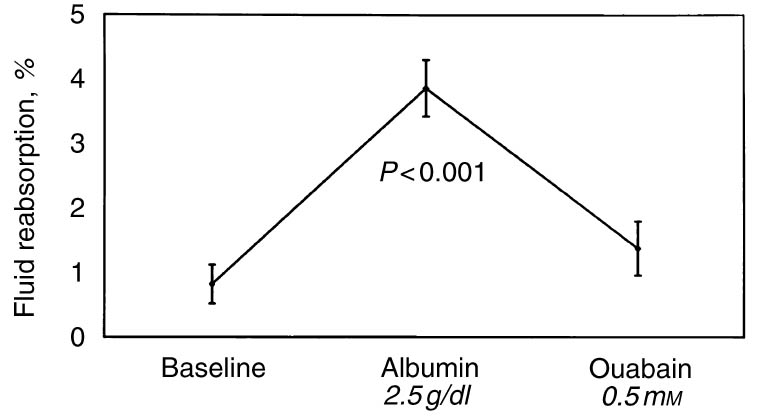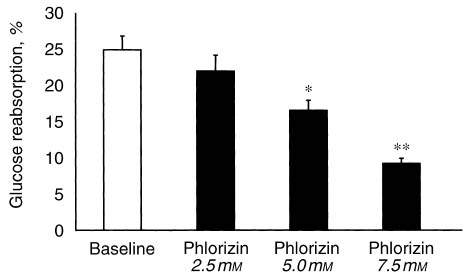
|
PRECLINICAL STUDY |
|
In “Tissue engineering of a bioartificial renal tubule assist device: In vitro transport and metabolic characteristics,” Humes et al. cultured porcine renal proximal tubule cells on their hallow fiber cartridges, which act as bioreactors, and tested whether they fulfilled the necessary requirements to function as a bioartificial kidney. This figure is a picture of two different sizes of the device. The smaller of the two has a surface are of 97 cm2. The larger has one of 0.4 m2.
This light micrograph shows the a confluent monolayer of cells on the inner surface of a hallow fiber.
Fluid reabsorption across the proximal tubule epithelium is based on oncotic and osmotic pressure. The oncotic pressure is due to lack of proteins in the tubular fluid but presence in the peritubular capillary system. The osmotic pressure is driven by the active sodium transport. The second point on the figure demonstrates the first part when the protein albumin is added to the simulated capillary space. The sodium driven component is removed when ouabain is added as seen in the second point.
Glucose reabsorption is another role of the proximal tubule cells. This figure proves that the cells are actually facilitating the transport of glucose as when their glucose transporters are inhibited by phlorizin, the glucose reabsorption drops.
Another function of the kidney is to help maintain homeostasis by producing ammonia if the pH of the blood is too low. The proximal tubule cells are the primary source of this ability. In this figure it can be clearly seen how the ammonia production of the cells in the device increases as the pH of the solution decreases.
There were several other experiments preformed to test further metabolic and endocrine functions of the device. As demonstrated by the selected figures from the paper, the tissue engineered construct behaves similarly to the proximal tubule epithelium it is intended replace. |
Website by David Dyer | UC Irvine BME240 | last updated 06/12/2009




